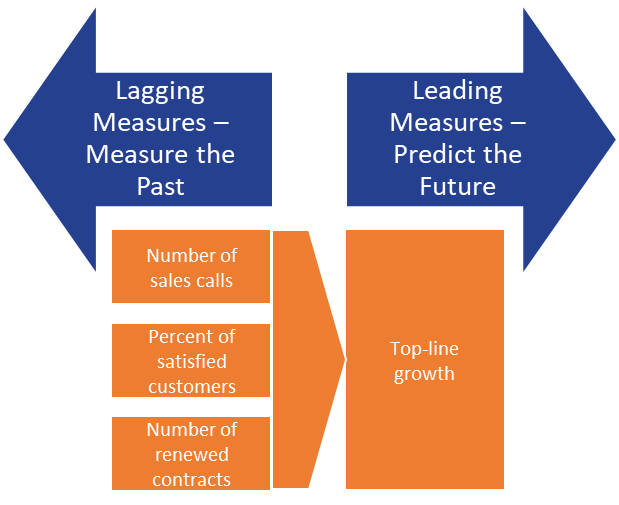Performance Management Essentials: Understanding Lagging Measures

This month, we’re exploring various performance management and measurement best practices that can help you improve your processes, ensure operational efficiency, and promote a thriving enterprise. Today we continue the series with an analysis of lagging measures.
What Is a Lagging Measure? A Snapshot of Where You’ve Been.
From assessing the success of ongoing and new ventures, improving products and processes, and making informed decisions about your operation’s future, measurement is essential to performance management. Critical to this is an understanding of what you’ve already done. That’s where lagging measures come in.
A key performance indicator, also known as a lagging indicator, a lagging measure is a metric of current performance. There are several standard lagging measures and many more that might be specific to your sector, industry, niche, or enterprise. Among the standard lagging measures are revenue; sales figures like sales cycle length, calls made or calls completed; and the number of donors, subscribers, clients, or customers. Specific industries might focus on safety-related lagging measures like the number of on-site accidents or recordable injuries. Others might look at software usage, event attendance, or widgets manufactured.
Regardless, lagging measures provide a snapshot of past activities. They are numbers that cannot be changed because they’ve already been measured. A leading measure provides a benchmark, a suggestion of what might happen given certain conditions, to help determine what approaches might be needed to meet specific longer-term goals. In contrast, a lagging measure is a less controversial, more straightforward metric of existing data. Lagging measures alert you to successes and failures that have already happened.
How Do Lagging and Leading Measures Interact? Think SMART.
As we explored in our post on leading measures, some metrics operate as both lagging and leading indicators. They are both in-process and after-the-fact measures of success. Customer satisfaction might be treated as a lagging measure — an indicator of past performance — and a leading measure, a predictor of future initiatives. Ditto recruitment, a lag indicator for human resources, measuring the numerical success of hiring initiatives, but a lead measure for the rest of the organization, predicting how hiring talented, energetic employees might affect future performance.
Lagging indicators typically inform leading measures, recording what has happened in the past to provide actionable intel for decisions about the future. For example, the number of accidents may lead to quantifiable safety measures. At the same time, sales revenue helps determine if you need to adjust the average sales stage length.
By measuring past performance, lagging indicators are, in fact, essential to drafting so-called SMART goals. As defined by various US government agencies, SMART is an acronym for goals that are:
- Specific, meaning clearly articulated and detailed
- Measurable, meaning quantifiable
- Achievable by your team
- Relevant to your mission
- Timely, meaning bound by a set schedule and delivery date
Understanding Data-Driven Performance Management
When your performance framework incorporates both lagging and leading measures, your decisions can become more intentional, more transparent, and more measurable in their outcome. Understanding these essential metrics can help drive meaningful change, deliver quantifiable value, and support superior performance while meeting your most important enterprise objectives.
Data-driven performance management is part of a library of practices, tools, and templates we at Momentum use to assist clients in their needs, including business improvement and change. Get in touch to learn more about how we might tap these tools to help steer your next venture.
 Tap to email
Tap to email

